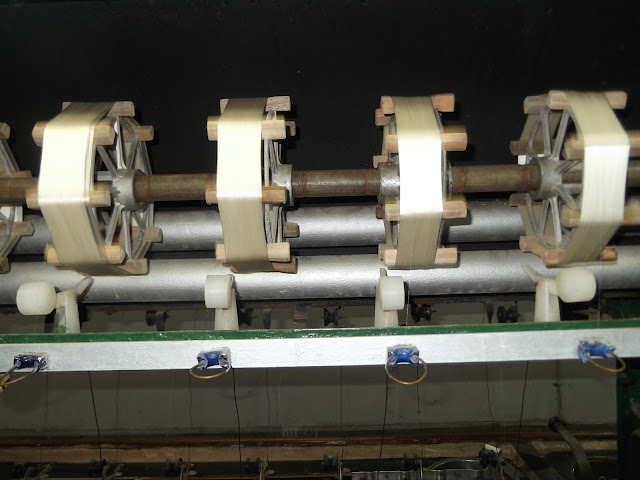I visited a Chinese Silk Factory on my 2nd day in Suzhou, Jiangsu Province, China. It was Choyers Suzhou No. 1 Silk Factory. Built in 1926, Suzhou No. 1 Silk Factory is a model for industrial tourism in China where the complete process of mulberry planting, silkworm raising, silk reeling, silk weaving and silk quilt making take place and can be seen by visitors.
Little baby silk worms eating mulberry leaves.
These silkworms have been eating mulberry leaves for a little longer and are much fatter.


Once the silkworms mature, they begin making cocoons. Several ways they do this is demonstrated within the factory.

Of course, it all begins with a moth who lays eggs to allow new silk worms to begin growing.
Cocoon Cooking - The cocoon coking is to make use of the effects of water and steam to let the cocoon cavity absorb a certain volume of water to cause the sericin around the silk to properly expand, moisten and dissolve, so as to reduce the gumming force among the silk, and thus to enable the cocoon silk to be separated continuously during silk reeling. The process of cocoon cooking is completed through the circulating of stainless steel cocoon-cooking machine.
This guy was dancing for me as I was taking his picture :-)
Next, the cocoons are "graded". The grading process is the first procedure of the silk reeling production. The silkworms, because of their individual difference and difference of environment in which they are producing silk and cocooning, make cocoons not of the same quality. Some of them can be used for silk reeling, while others cannot. The aim of the grading of cocoons is to grade them according to demands to pick out the cocoons not fit for silk reeling. The cocoons of clean and white color, good luster, uniform layer thickness and neat shape and size are called first-choice cocoons and may be used for silk reelings. Twin cocoons are usually used to make silk floss quilts because the silk of the two become entwined and cannot be separated for reeling. The cocoons which are yellow spotted, perforated, thin shelled or flossy, have to be rejected.
The silk reeling is a production procedure to change the cocoon into silk. The multi-ends silk reeling is to cohere a number of cocoon silks together from several cocoons in light of the thickness specification requirements of the raw silk after the cooked cocoons have been manually brushed and picked into correct end cocoons with one end from one cocoon. When end dropping arises during silk reeling, it is necessary to add in the picked correct cocoons in good time to always maintain the fixed number of cocoons, so as to ensure the specifications and quality of the raw silk.
If you look closely at the photo above, you can see the very delicate silk strands coming from the 7 different cocoons. Below is a video of the machine in motion. I can't remember if the leftover shell from the worm is in the video or not.
Re-reeling - the skein formed in the silk reeling contains a lot of moisture so the silk is re-reeled to properly dry the skein, at the same time to retain the elasticity, strength and elongation rate and to make the skeins into bunches of certain specifications to be baled and boxed for convenient transport and storage.
Silk Weaving -
A video of the silk weaving machine...
Two of the Wilcox kids shown helping to stretch the silk from the twinned cocoons to be used for quilt batting.
Employees stretching multiple layers of silk from the twinned cocoons onto a table to be used for quilt batting.
For whatever reason I didn't take any photos of the finished products but you've seen silk. It's just hard to imagine that so many annoying little worms give up their right to become moths because of our desire for exquisitely produced silk products.
Very interesting process. So happy the Wilcox family brought me to see this :-)
May 17, 2013 - Suzhou China


















No comments:
Post a Comment